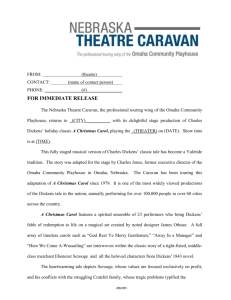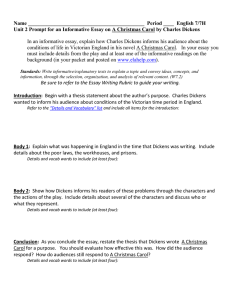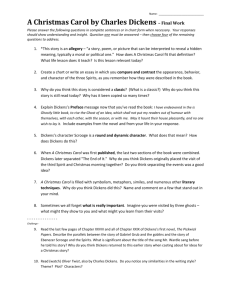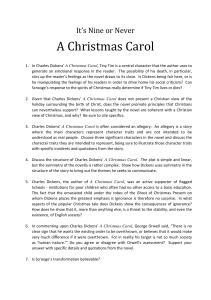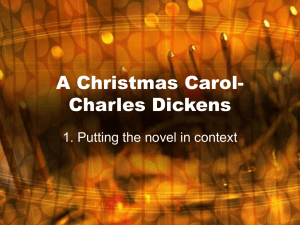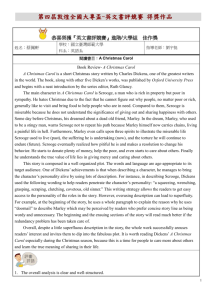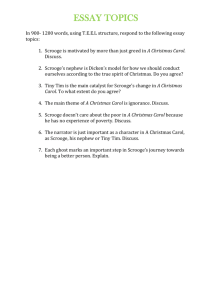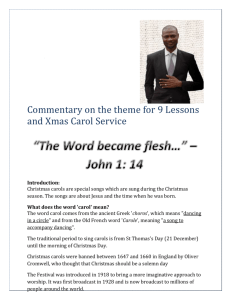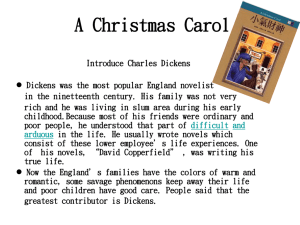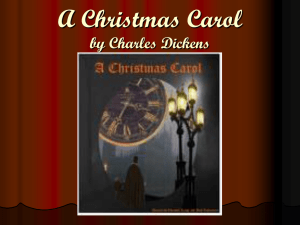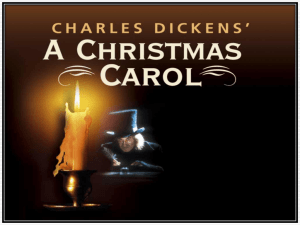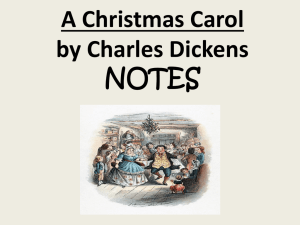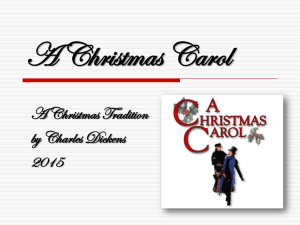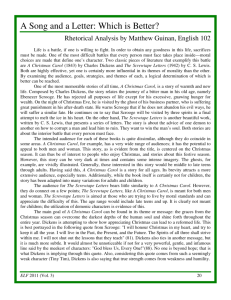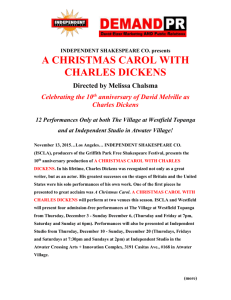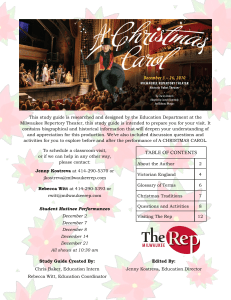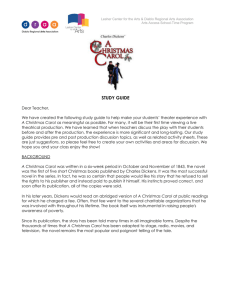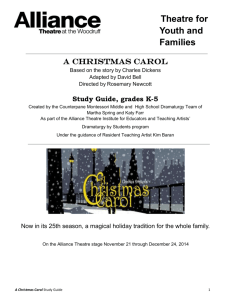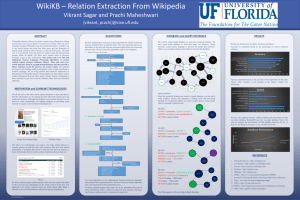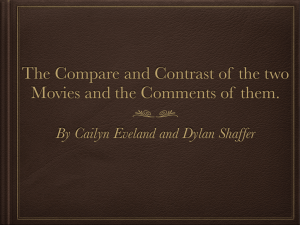Analyzing Literary Devices.doc
advertisement
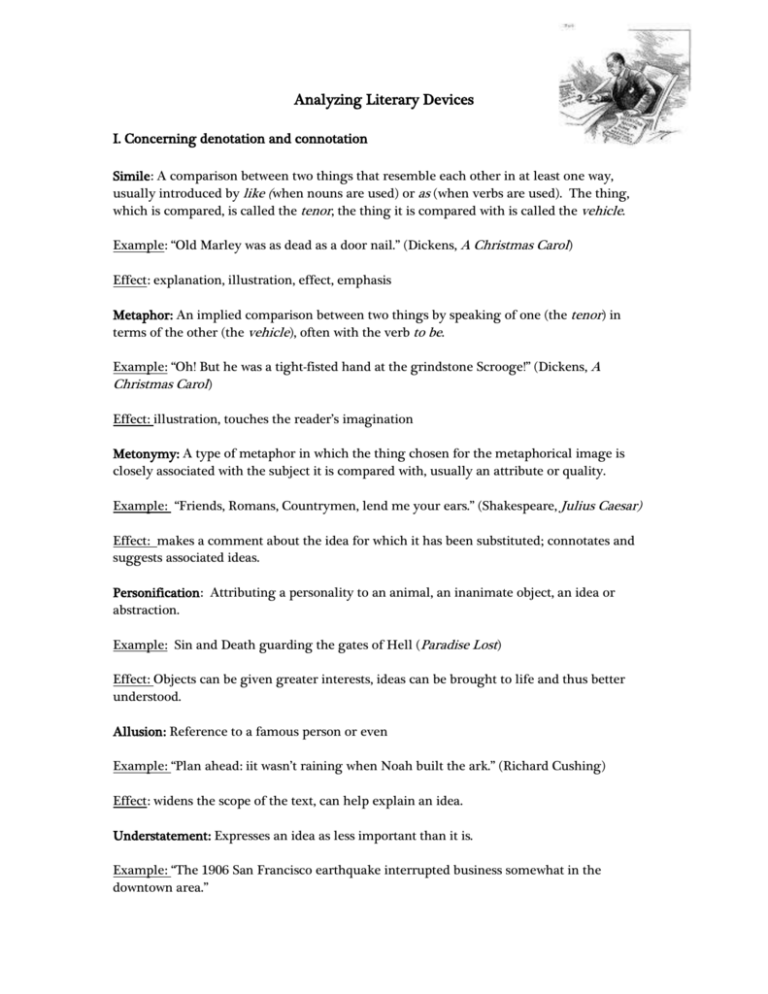
Analyzing Literary Devices I. Concerning denotation and connotation Simile: A comparison between two things that resemble each other in at least one way, usually introduced by like (when nouns are used) or as (when verbs are used). The thing, which is compared, is called the tenor, the thing it is compared with is called the vehicle. Example: “Old Marley was as dead as a door nail.” (Dickens, A Christmas Carol) Effect: explanation, illustration, effect, emphasis Metaphor: An implied comparison between two things by speaking of one (the tenor) in terms of the other (the vehicle), often with the verb to be. Example: “Oh! But he was a tight-fisted hand at the grindstone Scrooge!” (Dickens, A Christmas Carol) Effect: illustration, touches the reader’s imagination Metonymy: A type of metaphor in which the thing chosen for the metaphorical image is closely associated with the subject it is compared with, usually an attribute or quality. Example: “Friends, Romans, Countrymen, lend me your ears.” (Shakespeare, Julius Caesar) Effect: makes a comment about the idea for which it has been substituted; connotates and suggests associated ideas. Personification: Attributing a personality to an animal, an inanimate object, an idea or abstraction. Example: Sin and Death guarding the gates of Hell (Paradise Lost) Effect: Objects can be given greater interests, ideas can be brought to life and thus better understood. Allusion: Reference to a famous person or even Example: “Plan ahead: iit wasn’t raining when Noah built the ark.” (Richard Cushing) Effect: widens the scope of the text, can help explain an idea. Understatement: Expresses an idea as less important than it is. Example: “The 1906 San Francisco earthquake interrupted business somewhat in the downtown area.” Effect: wit, ironic emphasis, or politeness and tact. Rhetorical Question: A question that is not answered, because the answer is obvious. Example: “for of we lose the ability to perceive our faults, what is the food if living on?” (Marcus Aurelius) Effect: assertion, emphasis, provocation, or used for drawing a conclusion from known facts. Hyperbole: Exaggeration Example: “This stuff is used motor oil compared to the coffee you make, my love” Effect: emphasis, wit Antithesis: juxtaposition of opposing or contrasting ideas. Example: “To err is human; to forgive is divine.” (Pope) Effect: Creates a relationship between ideas; may help to clarify differences which might be overlooked otherwise Oxymoron: a paradox expressed in two words. Example: “dark sun” Effect: emphasis, complexity, wit, irony II. Concerning sounds, rhythm and rhyme: Anaphora: Repetition of the same word or words at the beginning of successive phrases, clauses or sentences. Example: “Scrooge was his sole executor, his sole administrator, his sole assign…” (Dickens, A Christmas Carol) Effect: emphasis Epistrophe: Repetition of the same word or words at the end of successive phrases, clauses or sentences. Example: “And all the night he did nothing but weep, Philoclea, sigh Philoclea, and cry out Philoclea.” Effect: extremely emphatic Alliteration: Repetition of initial consonants. Example: “No warmth could warm, no wintry weather chill him.” (Dickens, A Christmas Carol) Effect: emphasis, rhythm and melody. III. Concerning sentence structure Asyndeton: Omission of conjunctions between words, phrases, or clauses. Example: “a squeezing, wrenching, grasping, scraping, clutching, covetous old sinner!” ((Dickens, A Christmas Carol) Effect: idea of multiplicity, enumeration Polysyndeton: Conjunctions used between each word, phrase, or clause Example: “The heaviest rain, and snow, and sleet, and hail …” ((Dickens, A Christmas Carol) Effect: idea of multiplicity, building up
